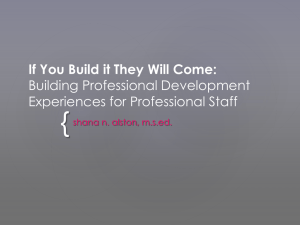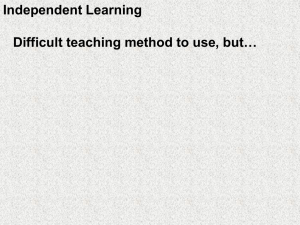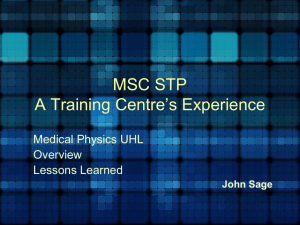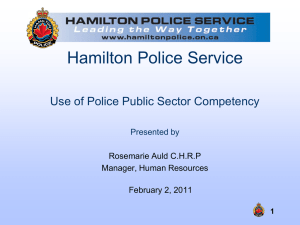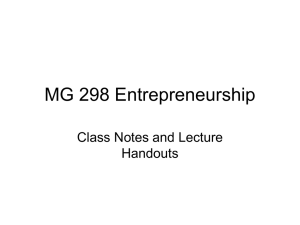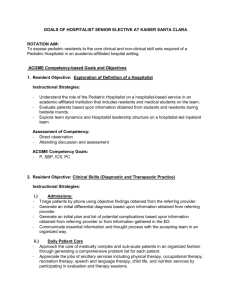Approaching Cultural Competency Education
advertisement
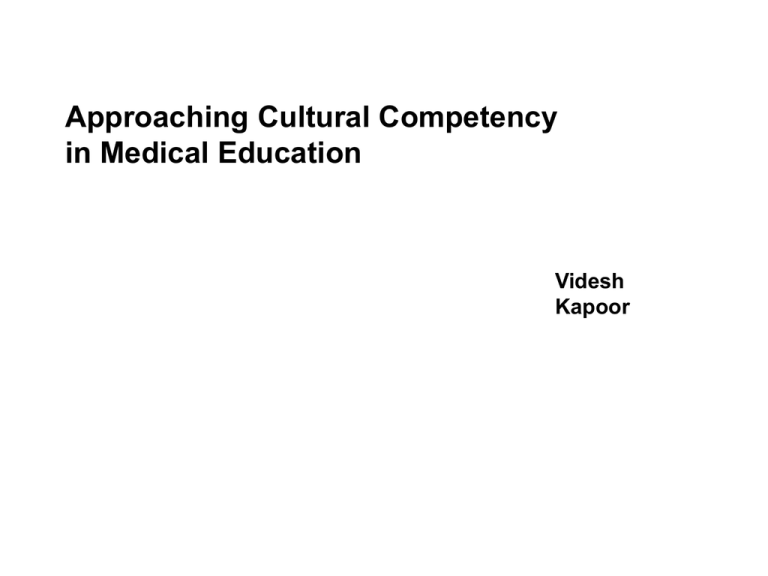
Approaching Cultural Competency in Medical Education Videsh Kapoor • Family physician, suburban practice • Director, Division of Global Health (Family Practice) • MD Undergraduate Program Global Heath Coordinator • Faculty Advisor, Global Health Initiative Defining cultural competency • • • • Culture matters Cultural context matters more Culture is not static Cultural factors impact diagnosis, treatment, and care. • Cultural factors impact professional communication • Does cultural knowledge improve clinical outcomes? • What is the role of political correctness in cultural competency? A call for cultural competency • LCME directive: the need for medical students “to recognize and appropriately address gender and cultural biases in health care delivery.” • FMEC recommendations for prioritizing social accountability and responsibility • 5 Standards for Accreditation of Medical Education Programs Leading to the MD Degree. Functions and Structure of a Medical School. Washington, DC: Liaison Committee on Medical Education; 2007. What defines cultural competency? • knowledge of characteristics, cultural beliefs, and practices of different nonmajority groups, and skills and attitudes of empathy and compassion in interviewing and communicating with nonmajority groups. • 6 (Kumagai et al, 2009) Defining cultural competency? • ‘a set of congruent behaviors, attitudes, and policies that come together in a system, agency, or among professionals and enable that system, agency, or those professionals to work effectively in crosscultural situations’ • 7 Cross, Bazron, Dennis & Isaacs, 1989 or 1999 Going beyond the concept of Cultural Competency • involves the fostering of a critical awareness—a critical consciousness—of the self, others, and the world and a commitment to addressing issues of societal relevance in health care. • 8 Kumagai et al 2009 Deconstructing the notion of cultural competency Cultural competency isn’t an endpoint, but rather a ongoing process involving multiple factors …..as is culture. 9 Synergistic processes Cultural awareness understanding differences and one’s own assumptions, values, and biases Cultural security provision of services offered by the health system will not compromise the legitimate cultural rights, values and expectations Cultural respect recognition, protection and continued advancement of the inherent rights, cultures and traditions Cultural safety undertaking a process of reflection on one’s own cultural identity and recognizes the impact of our own culture on our practice. Unsafe cultural practice is any action which diminishes, demeans or disempowers the cultural identity and well-being of an individual. (Papps, 2005, p. 25) Cultural humility lifelong commitment to self-evaluation and critique; addressing the power imbalances between patientphysician (teacher/student) and developing mutually beneficial…partnerships (Tervalon, Murray-Garcia) What is the object of knowledge in Cultural Competency ? learning a series of lists of cultural attributes, which can create dehumanizing stereotypes ? a skill-set of questions and demeanors we should assume when encountering a patient (student) who is not like us • Development of a critical consciousness of the knowledge and awareness to carry out the social roles and responsibilities of a physician (and teacher) • 11 Kumagai et al, 2009 Cultural Competency Initiative Jaspreet Mangat, Andrew Wong, Aiza Waheed, Sally Ke • Introduction to Communications Skills INDE 410 – first year medicine • Pilot – year one – readings and discussion, including a self-assessment survey and discussion • Pilot – year two – modify readings, add video teaching tool – interviews of patients and physicians; LEARN / RESPECT model 12 LEARN • Listen with sympathy and understanding to the patient's perception of the problem* • Explain your perceptions of the problem • Acknowledge and discuss the differences and similarities • Recommend treatment / plan • Negotiate agreement / plan • *Year one focus on FIFE and explanatory model approach • 13 Berlin, E. & Fowkes, W.A.(1983) RESPECT • Respect • Explanatory model • Social context, including Stressors, Supports, Strengths, and Spirituality • Power • Empathy • Concerns • Trust/ Therapeutic alliance/ Team. • 14 Welch, M. (1998). Enhancing awareness and improving cultural competence in health care. A partnership guide for teaching diversity and cross-cultural concepts in heath professional training. Translating RESPECT to the preceptor-student relationship • Empathic listening skills may wither in students whose own concerns are routinely ignored • Incorporating the student’s own values, worldview, and experiences • Addressing power dynamics in teaching relates to the concept of eliminating health disparities and a call for social justice and respect for social roles and responsibilities • 15 Kumagai et al, 2009 Precepting with RESPECT Adapting patient-care model to preceptor-learner relationship • Harnessing the parallels between educational and clinical encounters • (Carol Mostow et al) Respect/Rapport • Doctor - patient • A demonstrable attitude communicating the value and autonomy of the patient and the validity of his/her concerns • Preceptor - resident • Approach learner with respect • Builds learner confidence and preceptor-resident relationship • Reduces defensiveness Explanatory Model • The patient’s • Elicit the resident’s understanding of what thoughts about the causes their illness, patient and the or what will help it interest in the patient’s perspective • Helps preceptor learn what resident knows and creates starting point for discussion Social Context • Impact of patient's life upon illness and of illness on his/her life. Include stressors, supports, strengths, spiritual resources that influence patient, health or care • Check re. resident’s well-being and context; explore professional and personal stressors • Builds relationship • Models how to act with patients Power • Shared access to status, control, resources, options, and ability to produce desired outcomes • Emphasize partnership, negotiation or roles • Find ways to share power and support resident self-efficacy; resist temptation to takeover in face of learner’s uncertainty • Investment in service and learning partnership Empathy • Verbal and nonverbal responses that validate patients’ emotions and cause them to feel understood. • Let resident know their frustrations and emotions are heard • Observe for decline in resident’s mood and empathy, as well as any difference in patient’s background • Support resident to engage more effectively with patient Concerns/Fears • Worries about symptoms, diagnosis, or treatment, often unexpressed • Elicit and address resident’s concern about situations they don’t feel confident handling or fear will make the visit to long • Develop strategies to find solutions • Replace anxiety with information to improve quality and efficiency Trust, Team-building • Relationship built on understanding, power-sharing and empathy; patient confident that doctor acts on his behalf • Build on the above skills to foster trust in preceptor-student relationship • Learners may be more willing to identify areas of challenge References • Treating and Precepting with RESPECT: A Relational Model Addressing Race, Ethnicity, and Culture in Medical Training, Carol Mostow, LICSW,1 Julie Crosson, MD,2,9 Sandra Gordon, MD,3,9 Sheila Chapman, MD,3,9 Peter Gonzalez, MD,10,11 Eric Hardt, MD,6,9 Leyda Delgado, MD,3,8,9 Thea James, MD,7,9 and Michele David, MD, MPH, MBA3,4,5,9 ; J General Intern. Med. 2010 May • Beyond Cultural Competence: Critical Consciousness, Social Justice, and Multicultural Education, Arno K. Kumagai, MD, and Monica L. Lypson, MD; Acad Med, 2009; 84:782-787 • Anthropology in the Clinic: The Problem of Cultural Competency and How to Fix It, Arthur Kleinman, Peter Benson, PLoS Medicine, October 2006, Volume 3, Issue 10, e294 • Principles and Practices of Cultural Competency: A Review of the Literature http://www.deewr.gov.au/Indigenous/HigherEducation/Programs/IHEAC/Documents/ PrinciplePracCulturalComp.pdf





